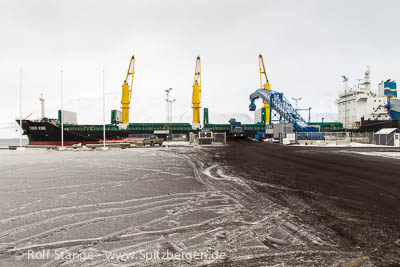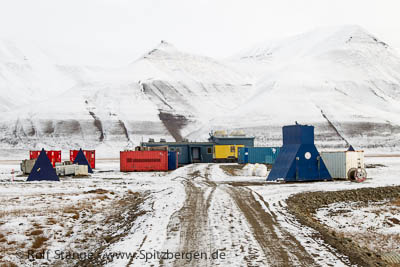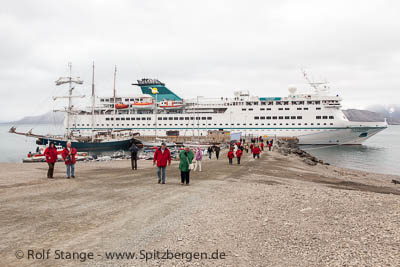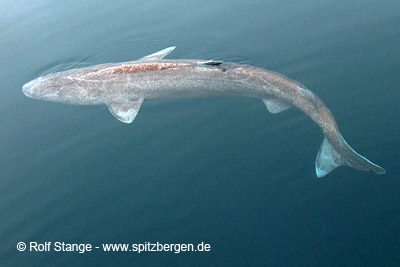-
current
recommendations- Liefdefjord
New page dedicated to one of Spitsbergen's most beautiful fjords. Background information and many photos.
- New Spitsbergen guidebook
The new edition of my Spitsbergen guidebook is out and available now!
- Liefdefjord
New page dedicated to one of Spitsbergen's most beautiful fjords. Background information and many photos.
Page Structure
-
Spitsbergen-News
- Select Month
- June 2025
- May 2025
- April 2025
- March 2025
- February 2025
- January 2025
- December 2024
- November 2024
- October 2024
- September 2024
- August 2024
- July 2024
- June 2024
- May 2024
- April 2024
- March 2024
- February 2024
- January 2024
- December 2023
- November 2023
- October 2023
- September 2023
- August 2023
- July 2023
- June 2023
- May 2023
- April 2023
- March 2023
- February 2023
- January 2023
- December 2022
- November 2022
- October 2022
- September 2022
- August 2022
- July 2022
- June 2022
- May 2022
- April 2022
- March 2022
- February 2022
- January 2022
- December 2021
- November 2021
- October 2021
- September 2021
- August 2021
- July 2021
- June 2021
- May 2021
- April 2021
- March 2021
- February 2021
- January 2021
- December 2020
- November 2020
- October 2020
- September 2020
- August 2020
- July 2020
- June 2020
- May 2020
- April 2020
- March 2020
- February 2020
- January 2020
- December 2019
- November 2019
- October 2019
- September 2019
- August 2019
- July 2019
- June 2019
- May 2019
- April 2019
- March 2019
- February 2019
- January 2019
- December 2018
- November 2018
- October 2018
- September 2018
- August 2018
- July 2018
- June 2018
- May 2018
- April 2018
- March 2018
- February 2018
- January 2018
- December 2017
- November 2017
- October 2017
- September 2017
- August 2017
- July 2017
- June 2017
- May 2017
- April 2017
- March 2017
- February 2017
- January 2017
- December 2016
- November 2016
- October 2016
- September 2016
- August 2016
- July 2016
- June 2016
- May 2016
- April 2016
- March 2016
- February 2016
- January 2016
- December 2015
- November 2015
- October 2015
- September 2015
- August 2015
- July 2015
- June 2015
- May 2015
- April 2015
- March 2015
- February 2015
- January 2015
- December 2014
- November 2014
- October 2014
- September 2014
- August 2014
- July 2014
- June 2014
- May 2014
- April 2014
- March 2014
- February 2014
- January 2014
- December 2013
- November 2013
- October 2013
- September 2013
- August 2013
- July 2013
- June 2013
- May 2013
- April 2013
- March 2013
- February 2013
- January 2013
- December 2012
- November 2012
- October 2012
- September 2012
- August 2012
- July 2012
- June 2012
- May 2012
- April 2012
- March 2012
- February 2012
- January 2012
- December 2011
- November 2011
- October 2011
- September 2011
- August 2011
- May 2011
- April 2011
- March 2011
- February 2011
- January 2011
- December 2010
- November 2010
- September 2010
- August 2010
- July 2010
- June 2010
- May 2010
- April 2010
- March 2010
- February 2010
- November 2009
- October 2009
- August 2009
- July 2009
- June 2009
- May 2009
- April 2009
- March 2009
- February 2009
- January 2009
- December 2008
- November 2008
- October 2008
- August 2008
- July 2008
- June 2008
- May 2008
- April 2008
- March 2008
- February 2008
- April 2000
- Select Month
-
weather information
-
Newsletter

| Guidebook: Spitsbergen-Svalbard |
Home
→ September, 2013
Monthly Archives: September 2013 − News & Stories
Spitsbergen-Svalbard.com on facebook
Now you can follow spitsbergen-svalbard.com on facebook. As probably the last ones in the business, we have recently established a facebook page. Posts are more frequent there than in the spitsbergen-svalbard.com news section, not only including important stuff from the arctic, but also small stories from polar voyages fresh from the field, news from the polar book factory, gems from the photo archive, … from real news to the occasional just purely funny post. You will find all posts both in English and in German.
We are looking forward to visits and „like it“ clicks at
https://www.facebook.com/spitzbergen.de
Spitsbergen-svalbard.com (Rolf Stange and MaLou, the logistics- and shipping department)
Spitsbergen-Svalbard.com on facebook
Oil in Spitsbergen?
Oil in Spitsbergen? Oil and gas have been looked for multiple times since the 1960, and nothing of economic value had been found so far. It did not seem a relevent question anymore, at least onshore.
Now it seems possible that there might be oil in relevant quantities where few would have expected it: naturally stored in the coal. The paleocene (60 million years ago) coal that is mined in Spitsbergen has an oil content that is higher than usual. Was the oil extracted from the coal and sold separately, then the value of one ton coal might see a significant rise: 150 oil-dollars against 70-80 dollars from coal sales, based on current world market prices. And even the residual coke might still be sold for energy production.
The oil potential of Spitsbergen’s coal reserves is roughly estimated at 700 million barrel: not a „gamechanger“ on the world market, but potentially very important for the local mining company, Store Norske. This does not include any reserves from coal older than the Paleocene. There is coal from the Devonian, Carboniferous, Triassic and Cretaceous in Spitsbergen, but these have not been investigated enough to say anything about their oil potential.
In any case, the value of the resources would rise significantly. This might also make coal seams interesting, that have so far been considered commercially unimportant.
If this ever becomes reality, is anything but certain: there is, so far, no process available that could be used commercially in Spitsbergen on an industrial scale. And any process would require substantial investments, something that would provide difficulties for Store Norske, which is currently facing a huge deficit. And finally, exploitation of so far untouched coal resources would be politically highly controversial, even in the oil-and-gas-country Norway.
Shipping coal from the port of Longyearbyen: will there be pipelines next to the cranes in the future?
Source: Teknisk Ukeblad
Gas in Spitsbergen?
Gas in Spitsbergen? Oil and gas have been looked for multiple times since the 1960, and nothing of economic value had been found so far. It did not seem a relevent question anymore, at least onshore.
Until recently, when gas was found by pure coincidence in quantities that has caused renewed interest and could actually lead to production in the future. It was during a research drilling for the CO2 storage project in Adventdalen (see “Longyearbyen CO2 neutral?” in spitsbergen-svalbard.com-news from May 2013) that gas started to flow out from the well with a constant pressure of 25 bar. The source rock is a shale at a depth of 700 meters. The owner of the area is Store Norske, the mining company that is running the coal mines in the same area (mine 7) and in Sveagruva.
There is, however, still a long way to go before any production might potentially start. Substantial and expensive explorative drilling is needed to investigate the nature and volume of the occurrence. If Store Norske is able and willing to invest heavily seems at least currently unlikely: the company is currently in a difficult economical situation.
It would be a twist of irony if reserach within a project designed to make the energy production in Longyearbyen CO2-neutral would lead to the production of even more fossil energy in Spitsbergen.
The CO2-Lab in Adventdalen near Longyearbyen: time will show if this is the site for future CO2 dumping or gas production.
Source: Petro.no
Spitsbergen-guidebook: 4th German edition now available
The 4th updated edition of Rolf Stange’s guidebook “Spitzbergen-Svalbard” (German version) is now available. Many text sections in almost all chapters have been updated or added, there are many new colour photos, a whole new page block of 16 pages with text has been added. A new cover makes the 4th edition recognizable as a new book. There are more than enough updates to make the purchase worthwhile also for owners of previous editions. Click here for more information about the new edition of “Spitzbergen-Svalbard” (4th German edition).
Technical difficulties during the print process led to a delay of several months during the production.
The third English edition (2012) remains of course available.
Spitsbergen-guidebook “Spitzbergen-Svalbard”: the 4th updated German edition is now available.
Polar bear dead after anaesthetisation by scientists
Scientific field work on polar bears is usually anything but animal-friendly. Fotos and videos from polar bears being chased by helicopters have more than once been seen and met with critizism. As a personal observation, we hardly see polar bears anymore that have not been marked by scientists. Near-contact with scientists, which can safely be assumed by be a very stressful, if not traumatic experience, is thus likely to be the rule rather than the exception for Spitsbergen’s polar bears.
Recently, a polar bear did not survive the scientific treatment. A young male, 2 or 3 years old and physically in good shape, was found dead 2 days after anaesthetisation by scientists at Meodden on Edgeøya. A possible explanation is that the animal has moved from a sideway position. It was found lying on the stomach and had suffocated. Anaesthetisated polar bears are left behind lying on the side to prevent suffocation, but they are not monitored. Suffocation after changing the position or predation by other bears can accordingly never be excluded.
Has not survived its meeting with scientists: polar bear at Meodden, Edgeøya (© foto: Sysselmannen på Svalbard).
Source: Svalbardposten
Loss due to fewer cruise ship tourists in Ny Ålesund
Ny Ålesund has received considerably fewer tourists in 2013, compared to the 2012 season. A year ago, visitors numbered near 40,000. This figure decresed to 25,000 in 2013. According to the director of the owner company, the consequence was a loss of 2 million Norwegian Kroner in harbour fees and souvenir sales.
The reason is believed to be the expensive compulsory pilotage, which is currently being introduced stepwise, and the ban of heavy oil as ship fuel, although ships using heavy oil may still visit Ny Ålesund and Magdalenefjord until 2014.
Source: Hegnar (Norwegian news website)
Greenland shark: high levels of long-lived pollutants
The Greenland shark is the unknown big animal in marine arctic ecology. Until recently, scientists have not spent too much attention to this large shark, and little is accordingly known about them. But during a scientific catch in Kongsfjord some years ago, surprising numbers were caught: dozens of sharks in a short time. They can be up to 7 m long, which places them amongst the largest sharks in the world.
Surprising was not only the number of sharks present in the bottom waters of Kongsfjord, but also the high levels of long-lived environmental toxins, which equal the high concentrations sadly known from polar bears in Spitsbergen.
Another surprise was their diet: the stomach content was mostly fish and seals. Appearently, they are efficient hunters and not just scavengers, as had been believed until then. The diet is likely to be the reason for the high levels of contaminants, which accumulate through the food chain and over time. The long life span of Greenland sharks may accordingly be another contributing factor to the high level of contamination. During the research catch, the biggest individual caught was as heavy as 700 kg, but not even old enough to reproduce.
Greenland shark in northwestern Greenland
Source: Norwegian Polar Institut
News-Listing live generated at 2025/June/15 at 04:52:06 Uhr (GMT+1)



































